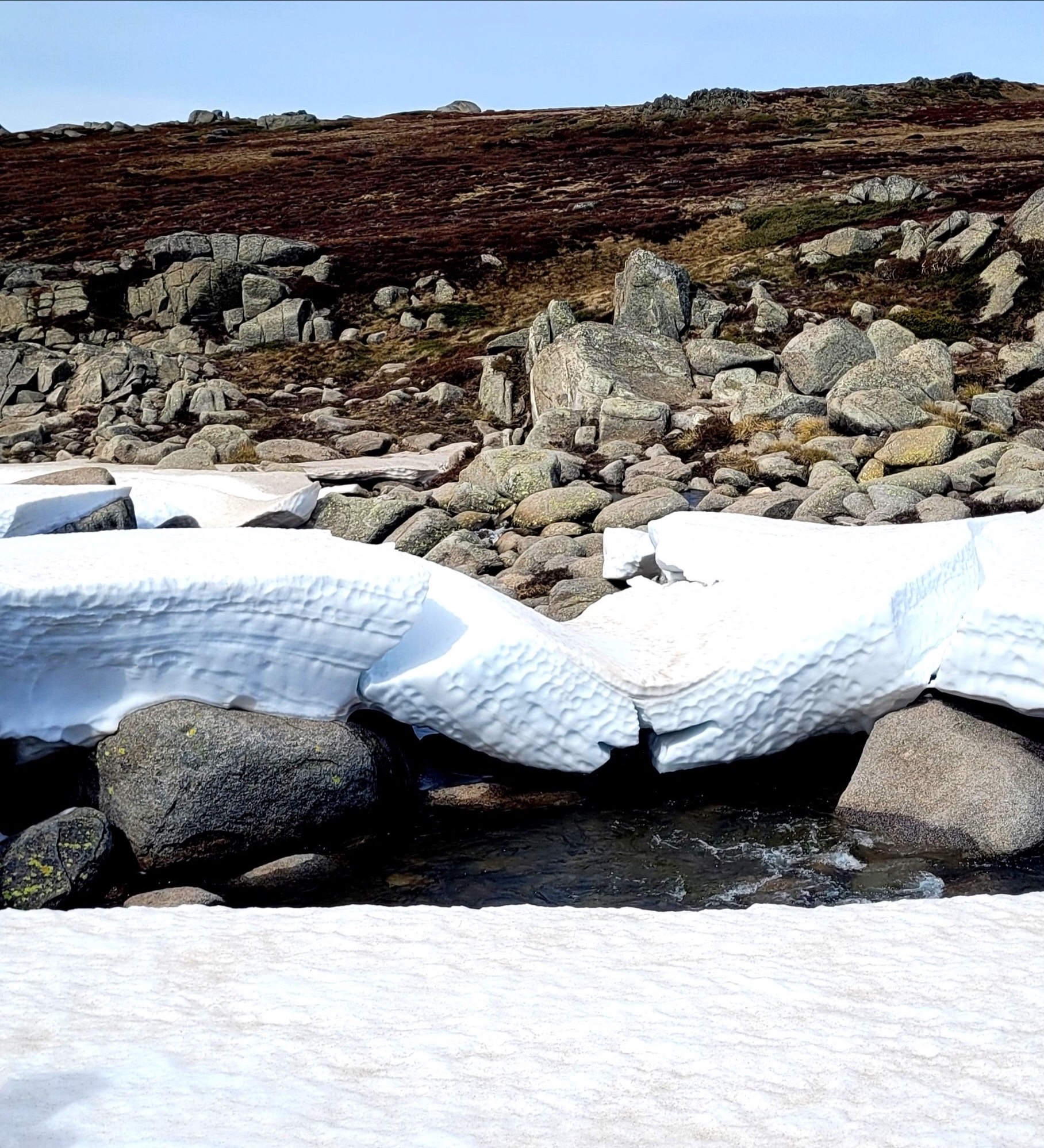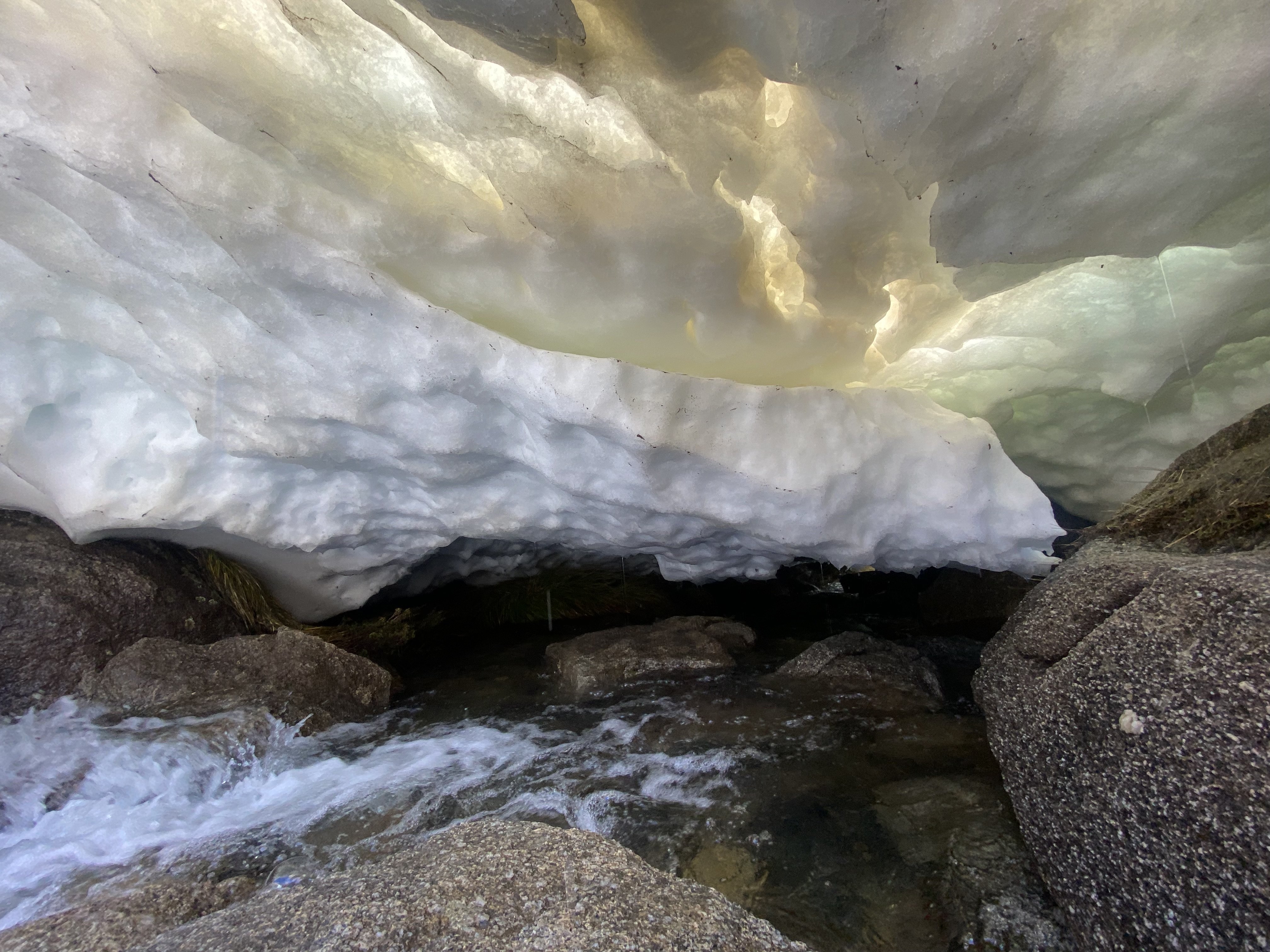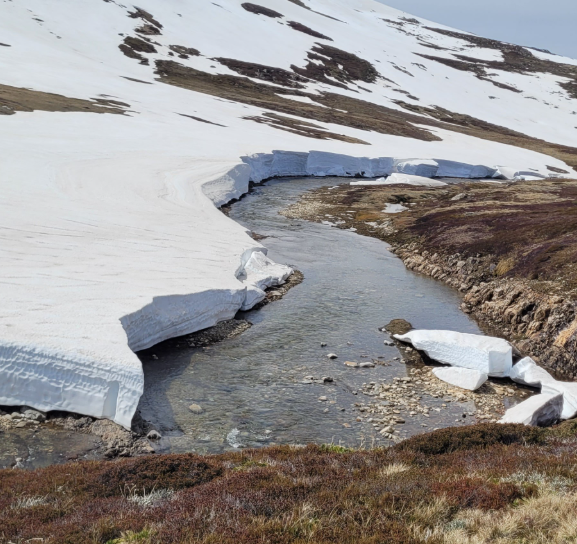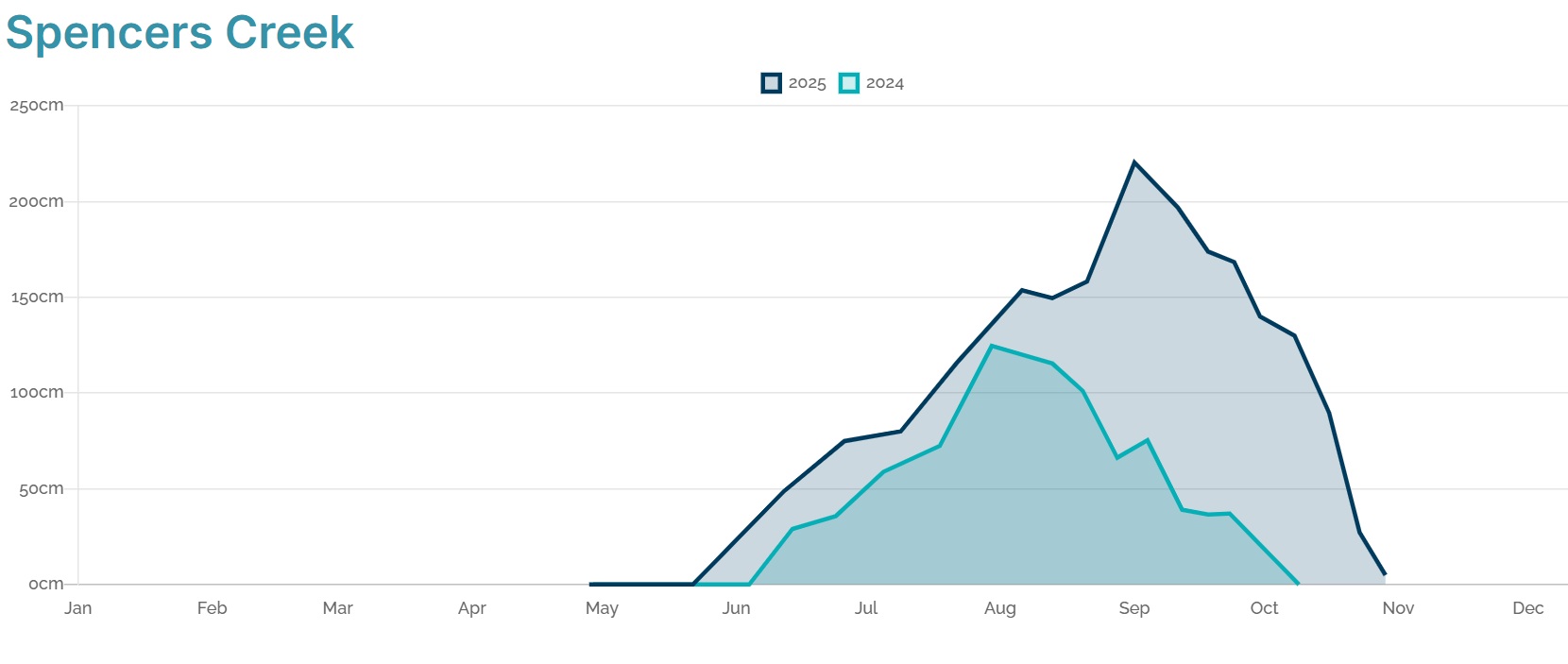News
‹ back to weather news
News
-
Late spring ice cliffs on Australian alpine creeks
Anthony Sharwood, 31 October 2025Australia's iconic Snowy River didn’t earn its name without good reason.
But "Icy River" would be a more accurate description right now, as high ice walls still line the banks of the upper reaches of the Snowy and nearby creeks and streams – even as November is upon us.
The reason these spectacular snowdrifts are still lining Australia’s highest alpine waterways a month out from summer is because 2025 was a relatively good snow season at higher elevations.

Image: Snowdrifts caving in under their own weight as the running waters of alpine creeks undercut them. Source: Phil Campbell.
While Australia’s lowest ski resorts struggled with a meagre snowpack and an abbreviated ski season, deep snow accumulated at the highest elevations of the mainland high country.
At an elevation of 1830m, Spencers Creek in NSW is the highest point at which Snowy Hydro has taken consistent snow depth readings through winter and spring since 1954. This year, Spencers Creek’s peak snow depth was 220.4cm in early September
The ice wall effect in the lead image of this story is caused by drifting snow. On ridges and wind-scoured parts of the mountains, snow disappears quickly at the beginning of spring or even in late winter. But in protected areas, snow accumulates until it is many metres deep.
Even after a moderate snow season, snow patches persist into spring and early summer on the lee slopes of Australia’s highest peak Mt Kosciuszko and nearby summits. Anyone who has hiked Kosciuszko in summer (and 100,000 people do it year) could tell you that.

Image: The view from below a snowdrift as an alpine creek carries meltwater to the Snowy River near Charlotte Pass, NSW. Source: Steve Smith.
Snow patches can also be seen well into December most years on the highest peaks of the Victorian Alps like Mt Bogong and Mt Feathertop.
But because the NSW alpine region is a few hundred metres higher than Victoria’s, and because its topography is slightly less rugged overall, the highest alpine valleys in NSW retain deep snowdrifts along the creeks well into spring too.

Image: Yes, this is Australia a month out from summer. Source: Phil Campbell.
Interestingly, October 2025 was slightly warmer than average in the high country, with a rapid melting of the remnant winter snowpack.
"A lack of moisture for cold fronts to turn into top-up snow has also contributed to rapid snow loss during October," Weatherzone meteorologist Ben Domensino explains.
Despite the swiftly diminishing snow cover, the ice walls remain along some creeks – for now.
Meanwhile the graph for Spencers Creek is just about locked in for season 2025, although it hasn’t quite hit rock bottom yet – with an average of 4.9cm on October 29. That measurement doesn’t include the deep ice walls on the fringe of the creek.

Image: The good 2025 season (at higher elevations) can be seen in dark blue, while the relatively poor and much shorter 2024 season is in light blue. Source: Snowy Hydro.
- Other news
- Fri 31 Oct 2025 Warmest October on record for Sydney, Brisbane
- Thu 30 Oct 2025 Days of severe thunderstorms ahead for Qld, NSW
- Thu 30 Oct 2025 Melbourne Cup 2025 weather: Rain and wintry temperatures in Melbourne on Monday, Tuesday
- Wed 29 Oct 2025 Why was Hurricane Melissa so strong when it hit Jamaica?
- Wed 29 Oct 2025 Brisbane’s wettest day since Cyclone Alfred

